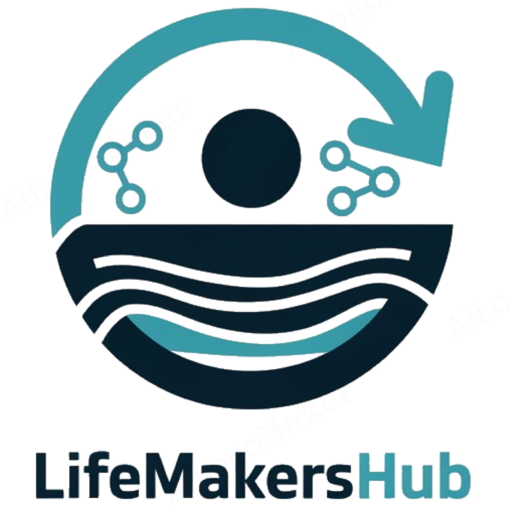Skill Acquisition: Strategies for Success
Mastering new abilities is a cornerstone of personal and professional growth. Whether you’re an athlete refining your technique or someone learning daily tasks, understanding how to acquire these abilities effectively can make all the difference. This process, often referred to as skill acquisition, plays a vital role in improving performance and achieving goals.
From sports to rehabilitation, the ability to learn and refine motor skills is essential. Research shows that structured approaches, like those developed by Board-Certified Behavior Analysts (BCBAs), significantly enhance progress. These experts use both indirect assessments, such as surveys, and direct observations to create tailored plans for success1.
This article dives into actionable strategies backed by theory and research. We’ll explore insights from neuroscience, biomechanics, and psychology to help you optimize your learning process. Our goal is to empower you with practical tools to enhance your motor skill development and apply these abilities in real-life situations.
Key Takeaways
- Skill acquisition is essential for improving performance in sports and daily life.
- Structured plans, like those from BCBAs, enhance learning outcomes1.
- Motor skill development involves stages like cognitive, associative, and autonomous learning2.
- Practical strategies blend insights from neuroscience, biomechanics, and psychology.
- Mastery criteria focus on accuracy, independence, and consistency1.
Definition and Importance of Skill Acquisition
Understanding how we learn and refine abilities is key to achieving excellence. This process, often referred to as skill acquisition, involves gaining voluntary control over movements to enhance performance and adaptability2. Whether it’s mastering a sport or recovering from an injury, this concept plays a vital role in personal and professional growth.
Skill acquisition is not just about repetition—it’s about structured progress. For example, learning to ride a bicycle or re-learning to walk after an injury involves stages of practice and adaptation. These stages are supported by research in psychology, neuroscience, and biomechanics, making it an interdisciplinary field2.
Why is this important? For self-improving professionals, mastering this concept can lead to better outcomes in both high-level performance and rehabilitation. Studies show that structured approaches, like those used by experts, significantly improve results2. By understanding the principles behind skill acquisition, you can optimize your learning process and achieve your goals more effectively.
In essence, skill acquisition is about more than just practice—it’s about strategic improvement. Whether you’re an athlete, a professional, or someone recovering from an injury, this process can transform how you approach challenges and achieve success.
Overview of Motor Skill Learning Fundamentals
Effective movement control is built on the principles of motor skill fundamentals. These fundamentals involve voluntary control over joints and body segments, enabling precise and coordinated actions1. Whether you’re lifting weights or running a marathon, understanding these basics is key to achieving success.
Voluntary control plays a crucial role in motor skill learning. It allows you to refine movements, improving accuracy and efficiency over time2. For example, a weightlifter must coordinate muscles and joints to execute a clean lift, while a runner adjusts stride length and pace for optimal performance.
The relationship between response times and movement accuracy is another critical factor. Faster responses often lead to improved performance, but only when paired with precise execution3. Training programs that focus on both speed and accuracy yield the best outcomes.
In the context of neuromuscular coordination, the term “motor” refers to the ability to control muscles and joints effectively. This coordination is essential for tasks ranging from simple gestures to complex athletic maneuvers1.
“Mastery of motor skills is not just about practice—it’s about understanding the science behind movement.”
Here’s a breakdown of key elements in motor skill learning:
| Element | Description |
|---|---|
| Voluntary Control | Ability to direct body movements intentionally. |
| Response Time | Speed at which a movement is initiated and executed. |
| Movement Accuracy | Precision in performing a specific action. |
| Neuromuscular Coordination | Integration of nerves and muscles for smooth movement. |
Understanding these fundamentals is essential for anyone looking to improve their physical abilities. Whether you’re an athlete or someone recovering from an injury, these principles provide a solid foundation for success.
Stages of Motor Learning: Cognitive to Autonomous
The journey from novice to expert in motor learning is both fascinating and complex. It involves distinct stages, each with unique challenges and milestones. Understanding these phases can help you optimize your training and achieve mastery more efficiently.
Fitts & Posner Model
Fitts and Posner’s three-stage model is a cornerstone in understanding motor learning. The first stage, the Cognitive Stage, is where learners are highly aware of their movements. Errors are frequent, and progress is rapid as they focus on understanding the task2.
In the Associative Stage, learners refine their movements. Errors decrease, and consistency improves as they establish fundamental patterns2. This phase is crucial for building a solid foundation.
The final stage, the Autonomous Stage, is where movements become automatic. Learners can perform the task effortlessly, often while multitasking2. However, reaching this stage requires extensive practice and effective instruction.
Gentile and Bernstein Perspectives
Gentile’s two-stage model offers a different perspective. The Initial Stage focuses on understanding regulatory conditions, such as environmental factors affecting the task2. The Later Stages emphasize consistency and adaptability.
Bernstein’s contributions highlight the complexity of motor learning. He introduced the “degrees of freedom problem,” which refers to the challenge of coordinating muscles and joints to solve motor problems2. His six-phase model emphasizes problem-solving and the development of movement strategies.
“Motor learning is not just about repetition—it’s about understanding and adapting to the challenges of each stage.”
Here’s a comparison of these models:
| Model | Key Focus |
|---|---|
| Fitts & Posner | Three stages: Cognitive, Associative, Autonomous. |
| Gentile | Two stages: Initial (understanding conditions) and Later (adaptation). |
| Bernstein | Six phases: Problem-solving and movement strategies. |
These models provide valuable insights for structuring training sessions. For example, a basketball player might start by focusing on shooting form (Cognitive Stage), refine their technique (Associative Stage), and eventually shoot effortlessly during a game (Autonomous Stage)2.
Understanding these stages can help you tailor your approach to motor learning, ensuring steady progress and long-term success.
Key Theories in Motor Learning and Control
Motor control theories offer insights into how we refine and generalize abilities. These theories provide a framework for understanding the mechanisms behind movement and learning. By exploring these concepts, we can develop effective strategies to enhance performance and achieve our goals.
Schmidt’s Schema Theory
Schmidt’s Schema Theory focuses on the idea of generalized motor programs. These programs are abstract representations of movement plans stored in memory. They include invariant features—unchanging aspects of a movement—and adjustable parameters that adapt to specific conditions2.
For example, when throwing a ball, the basic motion remains the same, but the force and direction adjust based on the target. This theory emphasizes the importance of practice in building a robust schema, allowing for flexibility and adaptability in different situations2.
Dynamical Systems Perspective
The dynamical systems perspective views movement as self-organizing under constraints. These constraints can be environmental, organismic, or task-related. For instance, a runner’s stride length may adjust based on terrain or fatigue2.
This approach highlights how movement patterns emerge naturally from the interaction of these factors. It contrasts with structured methods, focusing instead on the fluid, adaptable nature of motor control2.
“Understanding these theories helps us design training programs that align with how the body naturally learns and adapts.”
Both Schmidt’s Schema Theory and the dynamical systems perspective provide valuable information for setting clear performance targets. Whether you prefer a structured approach or a more fluid style, these theories can guide your goal-setting process and improve outcomes.
Implementing Effective Training Approaches
Effective training approaches are essential for achieving measurable improvements in performance. Structured methods, like those developed by experts, ensure that every session contributes to progress2. These methods focus on designing activities that enhance control and coordination, leading to better outcomes.
One key strategy is to balance practice intensity with proper rest and feedback. Overloading sessions can lead to fatigue, while insufficient practice may slow progress3. Regular monitoring of performance helps adjust training plans to meet individual needs.
Practical activities play a crucial role in fostering improved control. For example, drills that simulate real-life scenarios can enhance coordination and adaptability1. These activities should be tailored to the learner’s current level, ensuring gradual but steady improvement.
Effective training also leads to measurable results. By setting clear goals and tracking progress, learners can see tangible improvements in their performance2. This approach not only boosts confidence but also motivates continued effort.
“The right balance of practice, rest, and feedback is the foundation of successful training.”
Activity-based interventions are another powerful tool. These interventions focus on specific tasks that align with the learner’s goals, ensuring relevance and engagement1. For instance, a basketball player might focus on shooting drills to improve accuracy.
Here’s a quick guide to the key elements of effective training:
- Design structured sessions that focus on specific goals.
- Incorporate activities that enhance control and coordination.
- Balance practice intensity with rest and feedback.
- Monitor progress regularly to adjust training plans.
- Use activity-based interventions to target specific skills.
By implementing these strategies, you can optimize your training approach and achieve measurable results. Whether you’re an athlete or a professional, these methods provide a clear path to success.
Using Contextual Interference to Boost Performance

Contextual interference is a powerful tool for enhancing long-term learning and performance. This approach involves varying tasks during practice, making it more challenging but ultimately more effective. Research shows that this method improves retention and adaptability, especially in motor learning2.
When tasks are mixed rather than repeated in the same order, learners are forced to adapt and problem-solve. This prevents over-repetition and keeps the brain engaged. For example, a basketball player might alternate between shooting, dribbling, and passing drills rather than focusing on one skill at a time3.
Designing interventions that create meaningful task interactions is crucial. These interactions challenge learners to apply their knowledge in different contexts, fostering deeper understanding. Studies highlight that this approach leads to better skill retention and performance in real-world scenarios1.
Key research findings link contextual interference with improved learning outcomes. For instance, a study involving 31 participants showed that those exposed to varied practice conditions performed better in retention tests compared to those with repetitive practice3.
“Variability in practice is not just about making things harder—it’s about making learning stick.”
Here’s a summary of the benefits of contextual interference:
| Benefit | Description |
|---|---|
| Enhanced Retention | Learners retain skills better when practice is varied. |
| Improved Adaptability | Exposure to different tasks fosters flexibility. |
| Engaged Learning | Varied practice keeps learners mentally active. |
| Real-World Application | Skills learned through varied practice are more applicable in diverse situations. |
Examples from sports and rehabilitation illustrate these effects. A tennis player might practice serves, volleys, and backhands in random order to simulate match conditions. Similarly, a patient recovering from an injury might perform different exercises to regain full mobility2.
This approach challenges learners but results in greater long-term success. By incorporating contextual interference into training, individuals can achieve higher levels of mastery and adaptability1.
Practical Techniques to Enhance Skill Acquisition
Unlocking your potential starts with practical, actionable techniques. These strategies can be applied immediately to your training routines, helping you achieve measurable progress. Whether you’re refining athletic abilities or mastering everyday tasks, these methods are designed to optimize your learning process.
One effective method is repetition without repetition. This approach involves practicing the same task in varied settings to promote adaptability. For example, a basketball player might shoot from different angles or distances to simulate real-game conditions4.
Tailored drills are another essential component. These drills focus on specific aspects of a task, breaking it into manageable parts. By isolating each component, you can refine your technique and build a solid foundation5.
Feedback variations also play a crucial role. Immediate, constructive feedback helps identify areas for improvement. For instance, a coach might use video analysis to highlight specific movements during a training session6.
“Variety in practice is the key to adaptability and long-term success.”
Here’s a breakdown of practical techniques and their benefits:
| Technique | Benefit |
|---|---|
| Repetition without Repetition | Promotes adaptability in different settings. |
| Tailored Drills | Focuses on refining specific components of a task. |
| Feedback Variations | Provides actionable insights for improvement. |
Implementing these techniques requires a structured approach. Start by identifying your goals and designing drills that align with them. Gradually increase the complexity of tasks to challenge yourself and foster growth4.
Real-life examples demonstrate the effectiveness of these methods. A tennis player who practices serves under varying conditions, such as wind or fatigue, becomes more adaptable during matches5. Similarly, a patient recovering from an injury might perform exercises in different environments to regain full mobility.
By incorporating these practical techniques into your routine, you can enhance your abilities and achieve long-term success. Focus on specific methods, adapt to different settings, and refine each component of your training for optimal results.
Tailoring Training Sessions to Individual Needs
Personalized training is the key to unlocking individual potential. Every learner brings unique strengths, challenges, and preferences to the table. By customizing sessions to meet these needs, we can enhance ability and ensure steady progress2.
Understanding individual differences is the first step. Some learners thrive with visual cues, while others prefer hands-on practice. Recognizing these styles allows us to design sessions that resonate with each person’s concept of learning3.
Evaluating Individual Learning Styles
Assessing learning styles involves observing how individuals process information. For example, a study with 31 participants showed that varied practice conditions improved retention and adaptability3. This highlights the importance of aligning training methods with personal preferences.
Here are some common learning styles and how to address them:
- Visual Learners: Use diagrams, videos, or demonstrations.
- Auditory Learners: Incorporate verbal instructions and discussions.
- Kinesthetic Learners: Focus on hands-on activities and movement-based tasks.
Adapting Environmental Factors
Environmental conditions play a significant role in training success. Factors like lighting, noise, and space can impact focus and performance. Adapting these elements ensures learners can fully engage with the term of their training2.
For instance, reducing distractions in a noisy environment can improve concentration. Similarly, adjusting lighting to reduce glare can enhance visual clarity during tasks3.
“The right environment fosters focus and accelerates learning.”
By tailoring training sessions to individual needs and environmental factors, we create a supportive learning experience. This approach not only boosts ability but also empowers learners to achieve their goals effectively2.
Incorporating Feedback and Instruction Methods
Feedback and instruction are the backbone of effective learning and performance improvement. Whether you’re refining athletic abilities or mastering everyday tasks, well-timed and constructive feedback can significantly enhance your progress. This section explores how feedback sharpens motor learning and optimizes practice, along with strategies to deliver it effectively.
Feedback plays a critical role in motor learning. It helps learners identify errors, refine techniques, and build confidence. For example, a coach’s immediate feedback on a tennis player’s serve can lead to quicker adjustments and better performance2. Research shows that feedback is most effective when it’s specific, timely, and actionable3.
Effective Feedback Strategies
Delivering feedback requires a balance between challenge and support. Constructive feedback should highlight areas for improvement while acknowledging progress. For instance, a study with 31 participants found that varied feedback conditions improved retention and adaptability3.
Here are some strategies for effective feedback:
- Be Specific: Focus on precise actions rather than general performance.
- Timing Matters: Provide feedback immediately after the task for better retention.
- Encourage Self-Assessment: Guide learners to reflect on their performance.
Instruction methods also play a vital role in enhancing learning. Explicit instructions, such as breaking tasks into smaller steps, help learners understand and execute movements more effectively2. For example, teaching a basketball player to focus on footwork before shooting improves overall technique.
“Feedback is not just about correcting mistakes—it’s about guiding learners toward mastery.”
Repetition in practice is another key factor. While repetition helps solidify movements, it’s most effective when combined with varied tasks. This approach, known as contextual interference, challenges learners and enhances long-term retention3.
Here’s a summary of feedback and instruction strategies:
| Strategy | Benefit |
|---|---|
| Specific Feedback | Helps learners focus on precise improvements. |
| Timely Feedback | Enhances retention and immediate application. |
| Explicit Instructions | Breaks tasks into manageable steps for better understanding. |
| Varied Practice | Promotes adaptability and long-term retention. |
By incorporating these strategies, you can create a supportive learning environment that fosters growth and strength. Whether you’re a coach, trainer, or self-learner, effective feedback and instruction are essential for achieving your goals.
Strengthening Motor Skills Through Repetition and Variation
Refining motor performance requires a balance of repetition and variation to achieve lasting results. While repetition helps solidify movements, strategic variation ensures adaptability and long-term retention. This approach is particularly effective in sport and daily activities, where precision and flexibility are key2.
Repetition is essential for building muscle memory, but over-reliance on it can lead to stagnation. For example, practicing the same basketball shot repeatedly might improve accuracy in the short term, but it limits adaptability in real-game scenarios3. Introducing variations, such as shooting from different angles or under pressure, fosters better motor skill learning.
Trial-level adjustments play a crucial role in reducing errors and increasing precision. By tweaking small elements during each trial, learners can fine-tune their technique. This method is supported by research showing that varied practice conditions improve retention and adaptability3.
“Variability in practice is not just about making things harder—it’s about making learning stick.”
Here’s a comparison of blocked versus random practice and their effects on skill retention:
| Practice Type | Benefits | Drawbacks |
|---|---|---|
| Blocked Practice | Builds initial consistency | Limits adaptability |
| Random Practice | Enhances long-term retention | Requires more effort initially |
Examples from sports and daily life illustrate these principles. A tennis player who alternates between serves, volleys, and backhands during practice becomes more adaptable during matches. Similarly, a patient recovering from an injury might perform different exercises to regain full mobility2.
By combining repetition with variation, individuals can strengthen both technique and confidence. This approach challenges learners but results in greater long-term success. Whether you’re an athlete or someone mastering everyday tasks, strategic practice can transform your performance1.
Research Insights and Evidence-Based Practices
Recent advancements in motor learning research provide actionable insights for better performance. Studies have shown that structured approaches, like contextual interference, significantly enhance retention and adaptability2. This method involves varying tasks during practice, challenging learners to adapt and problem-solve, which leads to improved long-term results.
One key finding is the effect of trial-to-trial repetition on motor skill retention. Research involving 31 participants revealed that varied practice conditions, where tasks were mixed, resulted in better performance compared to repetitive practice3. This highlights the importance of introducing variability to foster adaptability in real-world scenarios.
Contextual interference has been particularly effective in both clinical and sports settings. For example, athletes who alternate between different drills during training show greater adaptability during competitions2. Similarly, patients recovering from injuries benefit from varied exercises, which help regain full mobility and coordination.
“Variability in practice is not just about making things harder—it’s about making learning stick.”
Here’s a summary of key research insights:
- Contextual Interference: Enhances retention and adaptability by varying tasks during practice.
- Trial-to-Trial Repetition: Reduces errors and increases precision when combined with variability.
- Practical Applications: Effective in both sports training and rehabilitation programs.
These evidence-based practices have evolved over time, shaping modern training approaches. By integrating these insights, individuals can optimize their learning process and achieve measurable improvements in performance2.
Whether you’re an athlete or a professional, understanding these research-backed strategies can transform how you approach challenges. Focus on variability, adaptability, and structured practice to unlock your full potential.
Building a Comprehensive Skill Acquisition Plan

Creating a structured plan for mastering new abilities ensures measurable progress and success. Whether you’re an athlete refining techniques or someone recovering from an injury, a well-designed plan can transform your learning process. This section will guide you through the steps to build a framework that targets actionable outcomes and addresses key challenges.
Defining Goals and Objectives
Start by setting clear and measurable goals. These should align with your desired outcomes, whether it’s improving performance in a sport or regaining mobility after an injury. For example, a basketball player might aim to increase shooting accuracy by 10%, while a patient recovering from a stroke might focus on walking independently1.
Goals should be specific, observable, and time-bound. This approach ensures you can track progress and make adjustments as needed. Studies show that structured plans, like those used in ABA therapy, significantly enhance learning outcomes by focusing on individual needs1.
Selecting Teaching Strategies
Choosing the right teaching strategies is crucial for effective learning. Different tasks require tailored approaches. For instance, discrete trial training is effective for breaking down complex movements into manageable steps, while naturalistic teaching encourages learning in real-world contexts1.
Here’s a breakdown of common teaching strategies and their applications:
| Strategy | Application |
|---|---|
| Discrete Trial Training | Breaks tasks into smaller steps for precision. |
| Naturalistic Teaching | Encourages learning in real-world settings. |
| Task Analysis | Focuses on sequencing actions for complex tasks. |
| Prompting and Fading | Uses cues to guide learning, gradually reducing support. |
Addressing the challenge of movement and action planning is essential. Varied practice conditions, such as alternating between different drills, enhance adaptability and retention3. For example, a tennis player might practice serves, volleys, and backhands in random order to simulate match conditions.
Consistent practice and adjustment are key to ensuring effective progress. Regularly monitor your performance and refine your plan based on feedback. This approach not only boosts confidence but also motivates continued effort1.
“A well-structured plan is the foundation of mastering any ability. Focus on clear goals, tailored strategies, and consistent practice to achieve success.”
By following these steps, you can build a comprehensive plan that transforms how you approach challenges. Whether you’re an athlete or someone recovering from an injury, this framework provides a clear path to success.
Skill Acquisition in Diverse Settings and Sports
Adapting learning techniques to different environments and sports is essential for achieving peak performance. Whether you’re training on a field, in a gym, or during rehabilitation, understanding how stimuli and conditions influence learning can make a significant difference7.
In sports, varying stimuli like weather, terrain, or opponent behavior can challenge athletes to adapt quickly. For example, a soccer player practicing in windy conditions learns to adjust their kicks for better accuracy7. Similarly, in clinical settings, patients recovering from injuries benefit from exercises that simulate real-life movements, enhancing their adaptability8.
Controlled repetition plays a crucial role in mastering movements. However, introducing variability during practice ensures that skills transfer to real-world scenarios. A tennis player who alternates between serves, volleys, and backhands becomes more adaptable during matches7.
“Variability in practice is not just about making things harder—it’s about making learning stick.”
Here’s a comparison of challenges and benefits in different settings:
| Setting | Challenges | Benefits |
|---|---|---|
| Sports | Unpredictable conditions, high pressure. | Improved adaptability, enhanced performance. |
| Clinical | Limited mobility, slower progress. | Regained independence, better coordination. |
| Everyday Life | Distractions, varied tasks. | Increased versatility, practical application. |
Tailoring strategies to specific environments drives better outcomes. For instance, a basketball player might focus on shooting drills in a quiet gym to build consistency, then practice in a noisy arena to simulate game pressure7.
These techniques are highly transferable. Whether you’re an athlete, a patient, or someone mastering daily tasks, adapting to different conditions ensures long-term success. By combining repetition with variability, you can achieve both precision and adaptability in any setting8.
Overcoming Challenges and Enhancing Performance
Navigating the hurdles of learning new abilities can be daunting, but with the right strategies, success is within reach. One common challenge is plateauing, where progress seems to stall despite consistent effort. This often occurs due to over-repetition, which limits adaptability and growth2.
Another obstacle is the lack of timely feedback. Without proper guidance, learners may reinforce incorrect techniques, hindering their development. Addressing these issues requires a combination of research-backed methods and precise instruction to redirect efforts and correct errors3.
The contextual interference effect is a powerful tool to combat these challenges. By varying tasks during practice, learners are forced to adapt and problem-solve, leading to better retention and adaptability. For example, a study with 31 participants showed that varied practice conditions improved performance significantly compared to repetitive practice3.
Precise instruction also plays a critical role. Clear, actionable feedback helps learners identify and correct mistakes, ensuring steady progress. For instance, a coach’s immediate feedback on a tennis player’s serve can lead to quicker adjustments and better performance2.
“Variability in practice is not just about making things harder—it’s about making learning stick.”
Here’s a summary of strategies to overcome challenges and enhance performance:
| Challenge | Solution |
|---|---|
| Plateauing | Introduce variability through the contextual interference effect. |
| Lack of Feedback | Provide precise, timely instruction to correct errors. |
| Over-Repetition | Balance practice with varied tasks to foster adaptability. |
Maintaining motivation is another key factor. Setting small, achievable goals can keep learners engaged and focused. For example, a basketball player might aim to improve shooting accuracy by 5% before moving on to more complex drills1.
By combining these strategies, individuals can overcome common challenges and achieve measurable improvements. Whether you’re an athlete or someone mastering everyday tasks, these methods provide a clear path to success2.
Key Elements of “skill acquisition” for Optimal Success
Achieving mastery in any field hinges on a well-structured approach to learning and improvement. A robust framework that integrates feedback, practice, and measurable goals is essential for long-term success2. Let’s explore the core components that make this process effective.
Feedback plays a pivotal role in refining abilities. It helps learners identify errors, adjust techniques, and build confidence. For example, a coach’s immediate feedback on a tennis player’s serve can lead to quicker adjustments and better performance3. Regular, constructive feedback ensures steady progress and keeps learners motivated.
An effective framework combines practice, instruction, and continuous review. Structured plans, like those developed by experts, ensure that every session contributes to measurable progress1. Tailored drills and varied tasks keep learners engaged and adaptable, fostering both precision and flexibility.
Measurable goals are another critical element. Setting clear, observable targets allows learners to track their progress and stay focused. For instance, a basketball player might aim to improve shooting accuracy by 10% before moving on to more complex drills1. These goals provide direction and a sense of accomplishment.
“A thoughtful, structured approach is the foundation of mastering any ability. Focus on clear goals, tailored strategies, and consistent practice to achieve success.”
Here’s a summary of the key elements for successful learning:
| Element | Description |
|---|---|
| Feedback | Provides actionable insights for improvement. |
| Framework | Structured plans that integrate practice and review. |
| Measurable Goals | Clear, observable targets to track progress. |
| Varied Practice |
Practical examples illustrate these principles. A tennis player practicing serves under varying conditions becomes more adaptable during matches2. Similarly, a patient recovering from an injury might perform different exercises to regain full mobility.
By incorporating these elements, individuals can optimize their learning process and achieve measurable improvements. Whether you’re an athlete or someone mastering everyday tasks, a structured approach ensures long-term success1.
Conclusion
The path to mastering new abilities is both challenging and rewarding, requiring dedication and strategic practice. Throughout this article, we’ve explored the progression through different stages of learning, from initial understanding to automatic execution. Each stage plays a vital role in building competence and confidence.
One of the most critical aspects of this process is the ability to transfer learned strategies to new contexts. Whether you’re an athlete or someone recovering from an injury, applying these techniques in varied settings ensures adaptability and long-term success2.
We encourage you to take these actionable strategies and integrate them into your training sessions. By focusing on structured practice, feedback, and variability, you can achieve measurable improvements and reach your goals.
Remember, learning is an evolving journey. With the right approach, you can transform challenges into opportunities for growth. Let this guide empower you to take the next step toward excellence.







